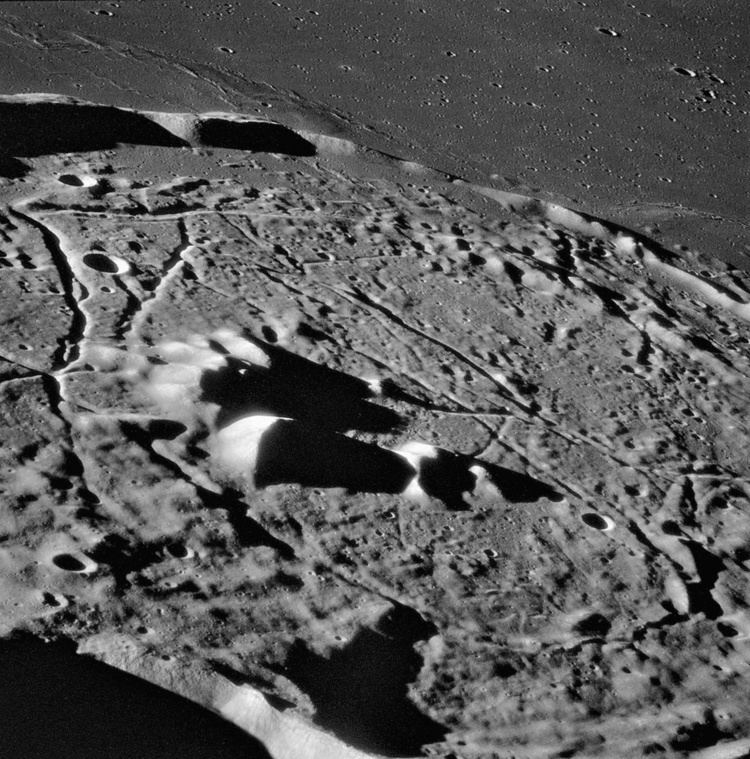 | ||
Rille (German for 'groove') is typically used to describe any of the long, narrow depressions in the surface of the Moon that resemble channels. The Latin term is rima, plural rimae. Typically a rille can be up to several kilometers wide and hundreds of kilometers in length. However, the term has also been used loosely to describe similar structures on a number of planets in the Solar System, including Mars, Venus, and on a number of moons. All bear a structural resemblance to each other.
Contents
Structures
Three types of rille are found on the lunar surface:
Rilles which show more than one structure are termed hybrid rilles. Rima Hyginus in Sinus Medii is an example, initially formed through a fault and subsequently subject to volcanic activity.
Formation
Precise formation mechanisms of rilles have yet to be determined. It is likely that different types formed by different processes. Common features shared by lunar rilles and similar structures on other bodies suggest that common causative mechanisms operate widely in the solar system. Leading theories include lava channels, collapsed lava tubes, near-surface dike intrusion, nuée ardente (pyroclastic cloud), subsidence of lava-covered basin and crater floors, and tectonic extension. On-site examination would be necessary to clarify exact methods.
Sinuous rilles
According to NASA, the origin of lunar sinuous rilles remains controversial. The Hadley Rille is a 1.5 km wide and over 300 m deep sinuous rille. It is thought to be a giant conduit that carried lava from an eruptive vent far to the south. Topographic information obtained from the Apollo 15 photographs supports this possibility; however, many puzzles about the rille remain.
